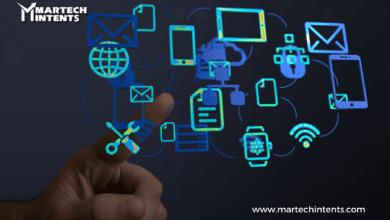Latest Trends & Strategies in Data Privacy & Security

Introduction: Data privacy and security
In today’s digital age, data is a prized asset, and protecting it has become a paramount concern for individuals, businesses, and governments alike.
As technology evolves, so do the challenges and opportunities in the realm of data privacy and security.
In this blog post, we will explore the latest trends and strategies in data privacy and security, shedding light on how organizations can stay ahead in safeguarding sensitive information.
Enhanced Focus on Privacy Regulations
Example: GDPR 2.0
The General Data Protection Regulation (GDPR) sets the stage for robust data protection worldwide.
Now, there is growing anticipation for GDPR 2.0, expected to introduce stricter rules, higher fines for non-compliance, and more stringent data transfer requirements.
Organizations need to stay vigilant and adapt to evolving privacy regulations.
Zero Trust Architecture
Example: Google’s BeyondCorp
The Zero Trust security model, as exemplified by Google’s BeyondCorp, challenges the traditional security perimeter.
It operates under the assumption that threats can come from both inside and outside the network.
By verifying every user and device attempting to connect, this approach minimizes security risks and ensures only authorized entities gain access.
AI-Powered Threat Detection
Example: Darktrace
Artificial Intelligence (AI) is revolutionizing threat detection by analyzing vast datasets in real time.
Darktrace, for instance, employs AI algorithms to detect anomalies and potential threats, enabling organizations to respond swiftly to security incidents.
Data Encryption and Homomorphic Encryption
Example: IBM’s Homomorphic Encryption Services
Data encryption is no longer an option but a necessity. Homomorphic encryption, championed by IBM, takes data security a step further by allowing computations on encrypted data without decrypting it first. This technology has significant implications for privacy in cloud computing.
Multi-Factor Authentication (MFA)
Example: Duo Security by Cisco
MFA has become the norm, with many organizations adopting solutions like Duo Security by Cisco.
By requiring multiple authentication methods, including biometrics, MFA adds an extra layer of protection against unauthorized access.
Privacy-Preserving Technologies
Example: Differential Privacy
Differential Privacy, a technique employed by Apple, anonymizes data by injecting noise into datasets to protect individual user identities while still enabling valuable data analysis.
This approach is gaining traction in data-driven industries while maintaining user privacy.
IoT Security
Example: Azure Sphere by Microsoft
As the Internet of Things (IoT) expands, so does the need for IoT security. Microsoft’s Azure Sphere is an integrated solution designed to secure IoT devices, from microcontrollers to cloud-based applications, protecting against emerging threats in the IoT landscape.
Blockchain for Data Integrity
Example: Guardtime
Blockchain technology offers tamper-proof data storage. Companies like Guardtime utilize blockchain to ensure data integrity, particularly in industries where the accuracy of records is critical, such as healthcare and supply chain management.
Privacy-Centric Browsers
Example: Brave Browser
Privacy-centric web browsers like Brave prioritize user privacy by blocking trackers, ads, and offering advanced privacy settings. These browsers empower users to take control of their online data.
Cybersecurity Awareness Training
Example: KnowBe4
Human error remains a significant cybersecurity risk. Companies like KnowBe4 provide cybersecurity awareness training to educate employees about potential threats, phishing attacks, and best practices for online security.
Learn more about Exploring the Cutting-Edge Trends in Data Privacy and Security
Conclusion: Data privacy and security
In the ever-evolving landscape of data privacy and security, organizations must stay informed and adapt to emerging trends and threats.
The latest trends in data privacy and security, from enhanced privacy regulations to AI-powered threat detection, provide both challenges and opportunities.
By embracing these trends and implementing robust strategies, organizations can safeguard their sensitive information, build trust with their customers, and stay resilient in the face of evolving cybersecurity threats.
As we move forward, the importance of data privacy and security will only continue to grow, making it a fundamental consideration for businesses and individuals alike.




